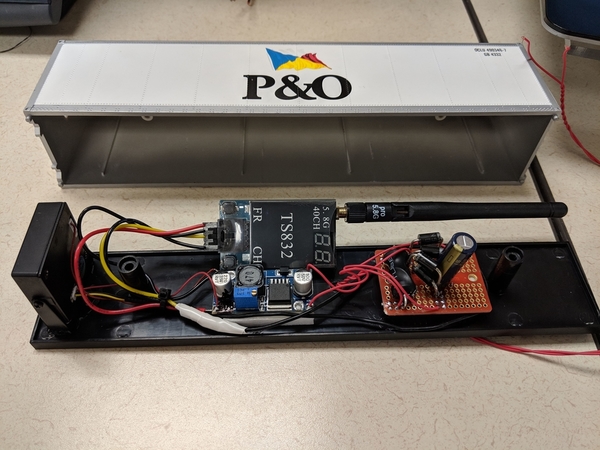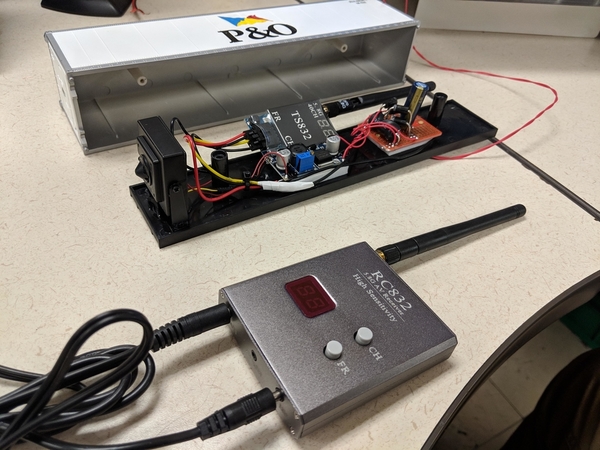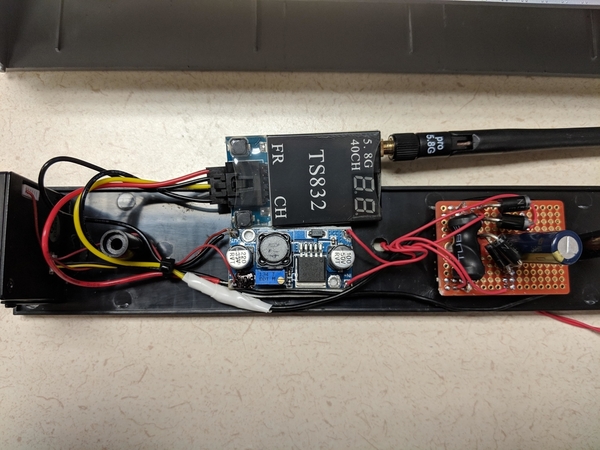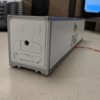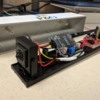Stone Rhino,
I mention earlier that I had purchased a newer receiver that gives me more detail about my connection, that unit is the Quanum 5.8GHz Auto Scan (non Diversity model) picture below. It gives me a signal strength readout in the top left corner of the OLED display which is very handy.


I did some testing with my FPV system this evening at different power levels. I place the FPV car about 75 feet from my receiver. The signal needed to pass through the floor, two walls and a closet door. Here were my signal readout for each power level along with what I observed on the screen.
25 mW - Signal was 25% - 30% - image was slightly better than poor with vertical white lines being fairly noticable and some static.
200 mW - Signal increased to 30% - 40% - image didn't improve much from the previous setting, fewer lines but the same amount static.
600 mW - Signal improved to 55% - 60% - Image improved greatly, an occasional white lines and slight static but the image is good quality.
I also did test at 600 mw in close proximity to the receiver (about 6 feet) and the image was crystal clear with a signal at 79%. Only when I placed the FPV car within 2 feet or less from receiver did the image begin to go crazy.
In my normal operating conditions I run at 25 mW and the receiver is usually no further than 45 feet away at any time with the occasional scenery obstruction. The signal ranges from 68% - 77% during these sessions.
While I do agree that 5.8 GHz doesn't have the penetrating power of lower frequencies, an unit running at 25 mW still has a fair amount of power to get the job done. Consider this, my home WiFi router has a 5.8 GHz transceiver that operates at 75 mW and it has more than enough power to reach about 125 feet just outside of my garage door when it is closed. Two walls may present an issue, but a 200 mW transmitter should be able to get the job done quite well.
A couple more ideas. Depending on the placement of your receiver, if the camera unit is always going to be operating on one side (the receiver is not centrally located to your layout), you may want to consider a directional dish antenna. Or placing the receiver at the most central location of where the camers car will operate and running a long video cable back to your screen (this maybe less than idea in most cases though).
I hope you get it working, I really want see a nice video of that engineer view!

















